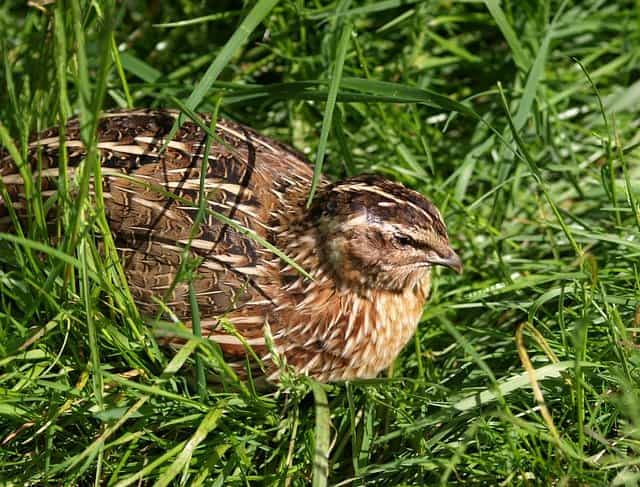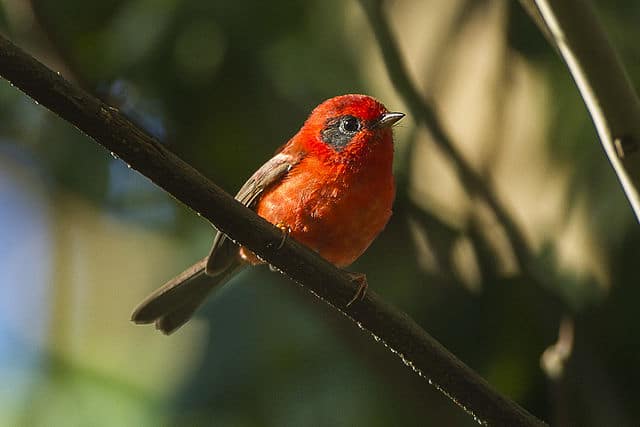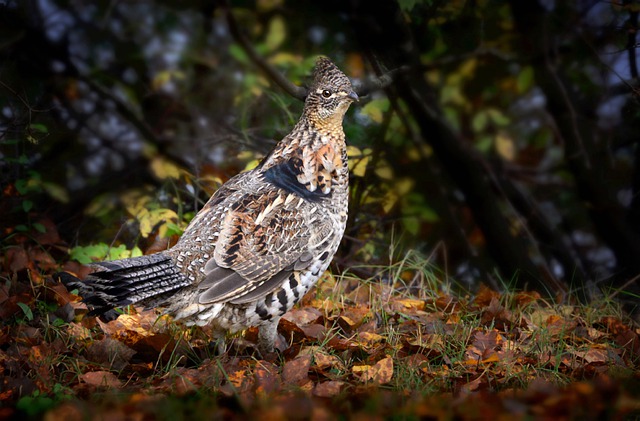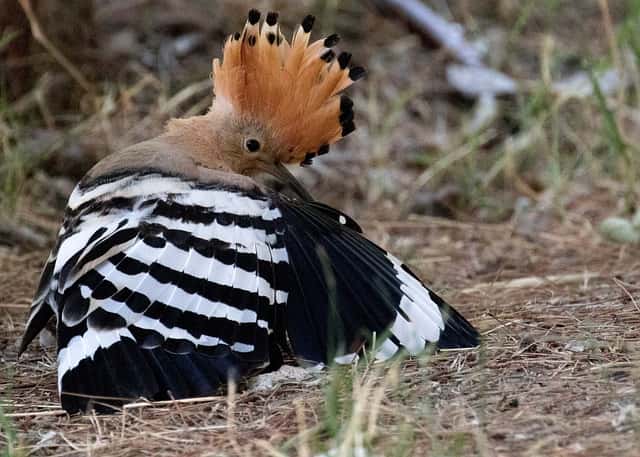6. European Quail (Coturnix coturnix)

The European Quail is also referred to as the common Quail. This is a migratory bird that spans across Europe, Africa, and Southern parts of Asia. This bird is potentially toxic to humans when eaten. Interestingly, this toxic trait dates back and has been recorded in ancient times also. This toxic phenomenon has led to the emergence of the phrase quail poisoning or coturnism.
These birds sequester a neurotoxic chemical coniine after consuming hemlock seeds during their flight migration from north to south. Common quails can be really poisonous leading to even such dreadful consequences as kidney failure it all depends on the certain plants this bird eats.
The good news is it’s only poisonous during the autumn migration period but it’s better to avoid this one on your plate unless you want some muscle soreness.
7. Red Warbler (Cardellina rubra)

The Red warbler from Mexico is a tiny songbird, measuring (4.9–5.3 in) in length, and weighing from 7.6 to 8.7 g. The red warbler is an insectivore. It is red in color, with either white or dark gray around ears each side of its head.
Its wings and tail are slightly darker, dusky red, and edged in pinkish-red. These little birds are also poisonous. The presence of neurotoxic alkaloids makes them inedible, making them undesirable to eat.
8. Ruffed Grouse (Bonasa umbellus)

The ruffed grouse is a medium-sized grouse occurring in forests from the Appalachian Mountains across Canada to Alaska. It is a non-migratory bird. Ruffed Grouse are small grouse with a short, triangular crest and a long, fan-shaped tail.
They have short legs and often look slimmer than other grouse species. Ruffed Grouse is toxic and it draws the toxic chemical coniferyl benzoate from consuming the quaking aspen flower buds and other plants.
9. Brush Bronzewing (Phaps elegans)

The Brush bronzewing is a species of bird in the pigeon family endemic to Australia. The brush bronzewing pigeons draw their toxicity from eating the seeds of the genus Gastrolobium, which have a high concentration of organically bound fluorine. A significant number of Gastrolobium species also accumulate monofluoroacetate, the key ingredient of the poison known commonly as 1080.
10. Hoopoe (Upupa epops)

The hoopoe bird is common throughout most of Europe, Asia, and Africa. This beautiful bird has black and white striped wings, a long and thin beak, short legs, and pinkish plumage around the rest of the body. Its most eye-catching feature is its crest of feathers, which resembles a large mohawk.
It serves as an important visual display and communication tool in the wild. The hoopoe is a small or medium-sized bird that measures between 10 and 12.6 inches long and up to three ounces in weight.
The hoopoe bird can emit toxic chemicals to ward off threats. This bird produces chemicals and oils through specialized glands that have a foul smell to discourage predators. Using their uropygial glands, highly concentrated with di-methyl sulfide offers them a chemical defense against predators. They use these chemicals to coat their eggs.


